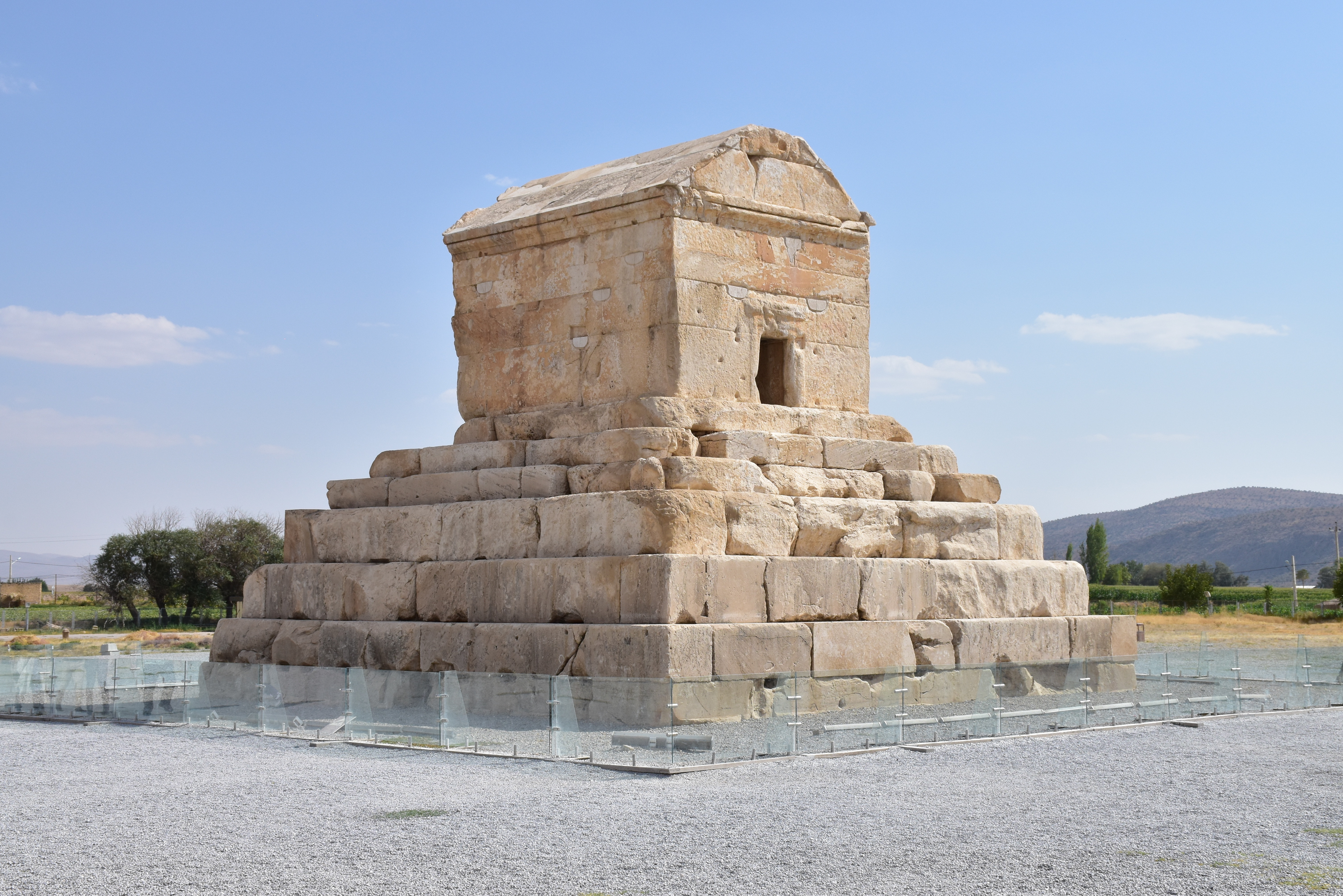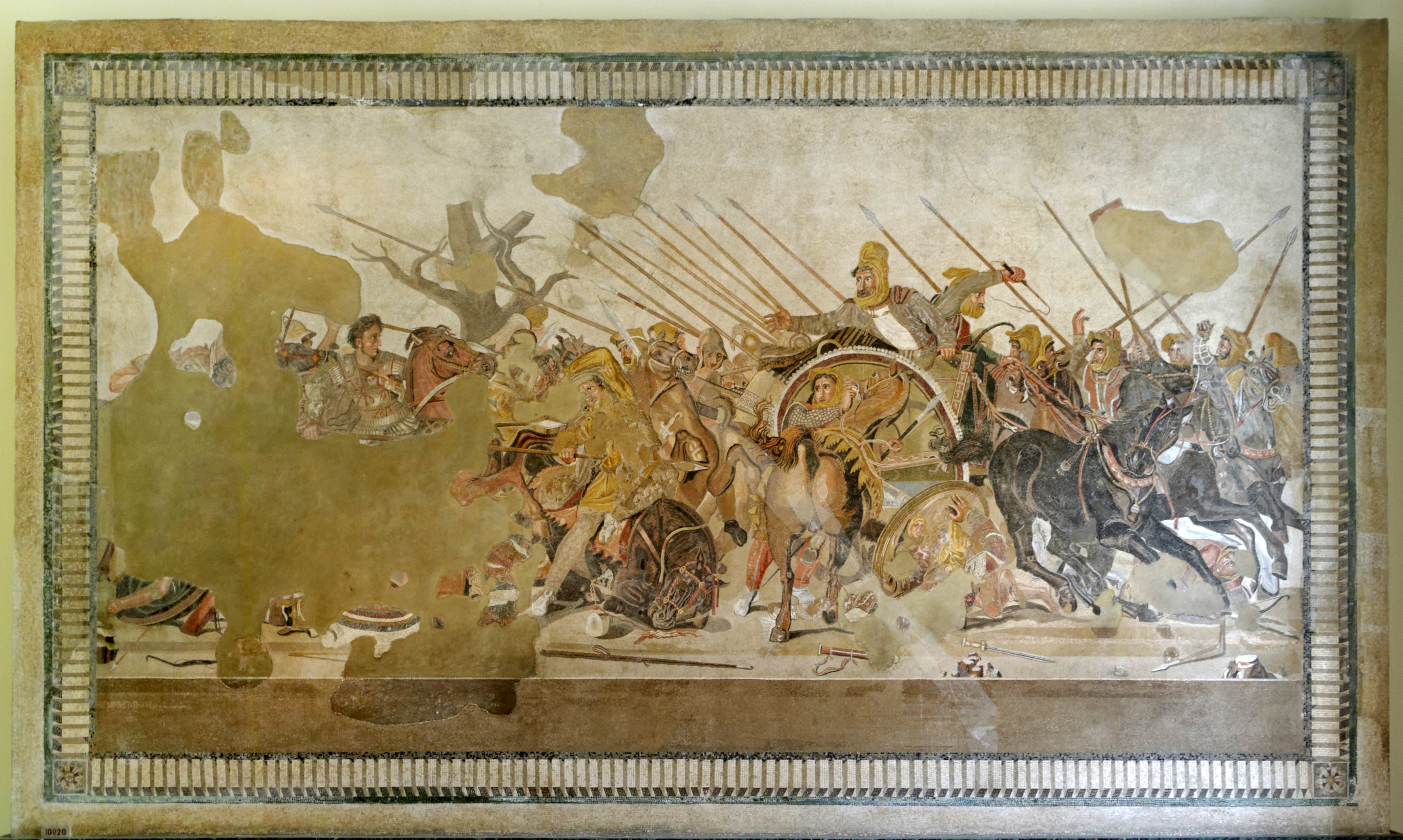|
Chorasmia (satrapy)
Chorasmia (Old Persian: 𐎢𐎺𐎠𐎼𐏀𐎷𐎡𐎹 ''hUvārazmiya'', 𐎢𐎺𐎠𐎼𐏀𐎷𐎡𐏁 ''hUvārazmiš'') was a satrapy of the Achaemenid Empire in Persia. Chorasmia had become part of the Achaemenid Empire in 522 BCE, and it seems to have been ruled by the satrap of Parthia (satrapy), Parthia. There exists an archaeological site in :de:Kalaly-gyr, Kalaly-gyr, modern Turkmenistan, in a rectangular area 1,000 x 600 m surrounded by a defensive wall 15 m thick, and an Achaemenid architecture, Achaemenid-style palace at its center, all of which were unfinished, suggesting the Persians' departure from Chorasmia shortly after the beginning of the 4th century BC. By the time of the Persian king Darius III, it had already become an independent kingdom. Its king, Pharasmanes of Charasmia, Pharasmanes, concluded a peace treaty with Alexander the Great in the winter of 327/328 A.D/C.E. [...More Info...] [...Related Items...] OR: [Wikipedia] [Google] [Baidu] |
Xerxes I Tomb Choresmian Soldier Circa 470 BCE
Xerxes ( ) may refer to: People * Xerxes I of Persia, "Xerxes the Great", reigned 486–465 BC * Xerxes II of Persia, briefly reigned 424 BC * Xerxes of Sophene, ruler of Sophene and Commagene, 228–201 BC * Xerxes (Sasanian prince), 6th-century prince and general * Xerxes (name), a list of people with the name Fiction, stage and video *''Il Xerse'' (''Xerxès'' in its 1660 French version), a 1654 opera by Francesco Cavalli *Xerse (Bononcini), ''Xerse'' (Bononcini), a 1694 opera by Giovanni Bononcini *''Serse'' (''Xerxes''), a 1738 opera by George Frideric Handel *''Xerxes'', a 1919 novel by Louis Couperus *Xerxes (TV series), ''Xerxes'' (TV series), a 1988 Swedish TV series about young adults *Xerxes (graphic novel), ''Xerxes'' (graphic novel), a 2018 graphic novel by Frank Miller Other *Xerxes Peak, a mountain in the Canadian Rockies *XerxesDZB, a Dutch professional football team based in Rotterdam *Roksan Xerxes, a series of record turntables from Roksan Audio (UK) *XerXeS, a ... [...More Info...] [...Related Items...] OR: [Wikipedia] [Google] [Baidu] |
Satrap
A satrap () was a governor of the provinces of the ancient Median kingdom, Median and Achaemenid Empire, Persian (Achaemenid) Empires and in several of their successors, such as in the Sasanian Empire and the Hellenistic period, Hellenistic empires. A satrapy is the territory governed by a satrap. A satrap served as a viceroy to the king, though with considerable autonomy. The word came to suggest tyranny or ostentatious splendour, and its modern usage is a pejorative and refers to any subordinate or local ruler, usually with unfavourable connotations of corruption. Etymology The word is derived via Latin from Ancient Greek, Greek (), itself borrowed from an Old Iranian languages, Old Iranian . In Old Persian, which was the native language of the Achaemenids, it is recorded as (, literally "protector of the province"). The Median language, Median form is reconstructed as . Its Sanskrit cognate is (). The Biblical Hebrew form is , as found in Esther 3:12. In the Parthian l ... [...More Info...] [...Related Items...] OR: [Wikipedia] [Google] [Baidu] |
Achaemenid Empire
The Achaemenid Empire or Achaemenian Empire, also known as the Persian Empire or First Persian Empire (; , , ), was an Iranian peoples, Iranian empire founded by Cyrus the Great of the Achaemenid dynasty in 550 BC. Based in modern-day Iran, it was the List of largest empires#Timeline of largest empires to date, largest empire by that point in history, spanning a total of . The empire spanned from the Balkans and ancient Egypt, Egypt in the west, most of West Asia, the majority of Central Asia to the northeast, and the Indus Basin, Indus Valley of South Asia to the southeast. Around the 7th century BC, the region of Persis in the southwestern portion of the Iranian plateau was settled by the Persians. From Persis, Cyrus rose and defeated the Medes, Median Empire as well as Lydia and the Neo-Babylonian Empire, marking the establishment of a new imperial polity under the Achaemenid dynasty. In the modern era, the Achaemenid Empire has been recognised for its imposition of a succ ... [...More Info...] [...Related Items...] OR: [Wikipedia] [Google] [Baidu] |
Persia
Iran, officially the Islamic Republic of Iran (IRI) and also known as Persia, is a country in West Asia. It borders Iraq to the west, Turkey, Azerbaijan, and Armenia to the northwest, the Caspian Sea to the north, Turkmenistan to the northeast, Afghanistan to the east, Pakistan to the southeast, and the Gulf of Oman and the Persian Gulf to the south. With a Ethnicities in Iran, multi-ethnic population of over 92 million in an area of , Iran ranks 17th globally in both List of countries and dependencies by area, geographic size and List of countries and dependencies by population, population. It is the List of Asian countries by area, sixth-largest country entirely in Asia and one of the world's List of mountains in Iran, most mountainous countries. Officially an Islamic republic, Iran is divided into Regions of Iran, five regions with Provinces of Iran, 31 provinces. Tehran is the nation's Capital city, capital, List of cities in Iran by province, largest city and financial ... [...More Info...] [...Related Items...] OR: [Wikipedia] [Google] [Baidu] |
Parthia (satrapy)
Parthia ( ''Parθava''; ''Parθaw''; ''Pahlaw'') is a historical region located in northeastern Greater Iran. It was conquered and subjugated by the empire of the Medes during the 7th century BC, was incorporated into the subsequent Achaemenid Empire under Cyrus the Great in the 6th century BC, and formed part of the Hellenistic Seleucid Empire after the 4th-century BC conquests of Alexander the Great. The region later served as the political and cultural base of the Eastern Iranian Parni people and Arsacid dynasty, rulers of the Parthian Empire (247 BC – 224 AD). The Sasanian Empire, the last state of pre-Islamic Iran, also held the region and maintained the seven Parthian clans as part of their feudal aristocracy. Name The name "Parthia" is a continuation from Latin ', from Old Persian ', which was the Parthian language self-designator signifying "of the Parthians" who were an Iranian people. In context to its Hellenistic period, ''Parthia'' also appears as ''Parthyaea' ... [...More Info...] [...Related Items...] OR: [Wikipedia] [Google] [Baidu] |
Turkmenistan
Turkmenistan is a landlocked country in Central Asia bordered by Kazakhstan to the northwest, Uzbekistan to the north, east and northeast, Afghanistan to the southeast, Iran to the south and southwest and the Caspian Sea to the west. Ashgabat is the capital and largest city. It is one of the six independent Turkic states. With a population over 7 million, Turkmenistan is the 35th most-populous country in Asia and has the lowest population of the Central Asian republics while being one of the most sparsely populated nations on the Asian continent. Turkmenistan has long served as a thoroughfare for several empires and cultures. Merv is one of the oldest oasis-cities in Central Asia, and was once among the biggest cities in the world. It was also one of the great cities of the Islamic world and an important stop on the Silk Road. Annexed by the Russian Empire in 1881, Turkmenistan figured prominently in the anti-Bolshevik movement in Central Asia. In 1925, Turkmenistan be ... [...More Info...] [...Related Items...] OR: [Wikipedia] [Google] [Baidu] |
Achaemenid Architecture
Achaemenid architecture includes all architectural achievements of the Achaemenid Empire, Achaemenid Persians manifesting in construction of spectacular cities used for governance and inhabitation (Persepolis, Susa, Ecbatana), temples made for worship and social gatherings (such as Zoroastrianism, Zoroastrian temples), and mausoleums erected in honor of fallen kings (such as the burial tomb of Cyrus the Great). Achaemenid architecture was influenced by Architecture of Mesopotamia, Mesopotamian, Assyrian, Ancient Egyptian architecture, Egyptian, Elamite, Lydian, Ancient Greek architecture, Greek and Medes, Median architecture.Boardman J. ''Persia and the West: An Archaeological Investigation of the Genesis of Achaemenid Art''. Thames & Hudson. 2000. p. 102-122.André-Salvini B. ''Forgotten Empire: The World of Ancient Persia''. University of California Press. 2005. p. 54.Talebian M. H. ''Persia and Greece: The role of cultural interactions in the architecture of Persepolis-Pasarga ... [...More Info...] [...Related Items...] OR: [Wikipedia] [Google] [Baidu] |
Darius III
Darius III ( ; ; – 330 BC) was the thirteenth and last Achaemenid King of Kings of Persia, reigning from 336 BC to his death in 330 BC. Contrary to his predecessor Artaxerxes IV Arses, Darius was a distant member of the Achaemenid dynasty. During his early career, he was reportedly an obscure figure among his peers and first rose to prominence during the Cadusian expedition of Artaxerxes III in the 350s BC. As a reward for his bravery, he was given the Satrapy of Armenia. Around 340 BC, he was placed in charge of the royal "postal service," a high-ranking position. In 338 BC, Artaxerxes III met an abrupt end after being poisoned by the court eunuch and chiliarch (''hazahrapatish'') Bagoas, who installed Artaxerxes' youngest son Arses on the throne. He only reigned for a few years, until Bagoas had him poisoned as well. Darius was subsequently installed on the throne and soon forced Bagoas to drink his poison after discovering that the eunuch had planned to poison him as w ... [...More Info...] [...Related Items...] OR: [Wikipedia] [Google] [Baidu] |
Pharasmanes Of Charasmia
Pharasmanes or Pharsman ( ka, ფარსმან) may refer to: People *Pharasmanes I, Georgian king *Pharasmanes II Pharasmanes II the Valiant or the Brave ( ka, ფარსმან II ქველი) was a king (''Mepe (title), mepe'') of Kingdom of Iberia (antiquity), Iberia (Kartli) from the Pharnavazid dynasty, contemporary of the Roman emperor Hadrian ( ..., Georgian king * Pharasmanes III, Georgian king * Pharasmanes IV, Georgian king * Pharasmanes V, Georgian king * Pharasmanes VI, Georgian king Places * Parsman, Iran, a village in Markazi Province, Iran {{dab, hndis ... [...More Info...] [...Related Items...] OR: [Wikipedia] [Google] [Baidu] |
Alexander The Great
Alexander III of Macedon (; 20/21 July 356 BC – 10/11 June 323 BC), most commonly known as Alexander the Great, was a king of the Ancient Greece, ancient Greek kingdom of Macedonia (ancient kingdom), Macedon. He succeeded his father Philip II of Macedon, Philip II to the throne in 336 BC at the age of 20 and spent most of his ruling years conducting Wars of Alexander the Great, a lengthy military campaign throughout West Asia, Western Asia, Central Asia, parts of South Asia, and ancient Egypt, Egypt. By the age of 30, he had created one of the List of largest empires, largest empires in history, stretching from History of Greece, Greece to northwestern History of India, India. He was undefeated in battle and is widely considered to be one of history's greatest and most successful military commanders. Until the age of 16, Alexander was tutored by Aristotle. In 335 BC, shortly after his assumption of kingship over Macedon, he Alexander's Balkan campaign, campaigned in the Bal ... [...More Info...] [...Related Items...] OR: [Wikipedia] [Google] [Baidu] |
Khwarezm
Khwarazm (; ; , ''Xwârazm'' or ''Xârazm'') or Chorasmia () is a large oasis region on the Amu Darya river delta in western Central Asia, bordered on the north by the (former) Aral Sea, on the east by the Kyzylkum Desert, on the south by the Karakum Desert, and on the west by the Ustyurt Plateau. It was the center of the Iranian Khwarezmian civilization, and a series of kingdoms such as the Afrighid dynasty and the Anushtegin dynasty, whose capitals were (among others) Kath, Gurganj (now Konye-Urgench) andfrom the 16th century on Khiva. Today Khwarazm belongs partly to Uzbekistan and partly to Turkmenistan. Names and etymology Names Khwarazm has been known also as ''Chorasmia'', ''Khaurism'', ''Khwarezm'', ''Khwarezmia'', ''Khwarizm'', ''Khwarazm'', ''Khorezm'', ''Khoresm'', ''Khorasam'', ''Kharazm'', ''Harezm'', ''Horezm'', and ''Chorezm''. In Avestan the name is '; in Old Persian 𐎢𐎺𐎠𐎼𐏀𐎷𐎡𐏁 or 𐎢𐎺𐎠𐎼𐏀𐎷𐎡𐎹 (/hUvā ... [...More Info...] [...Related Items...] OR: [Wikipedia] [Google] [Baidu] |






